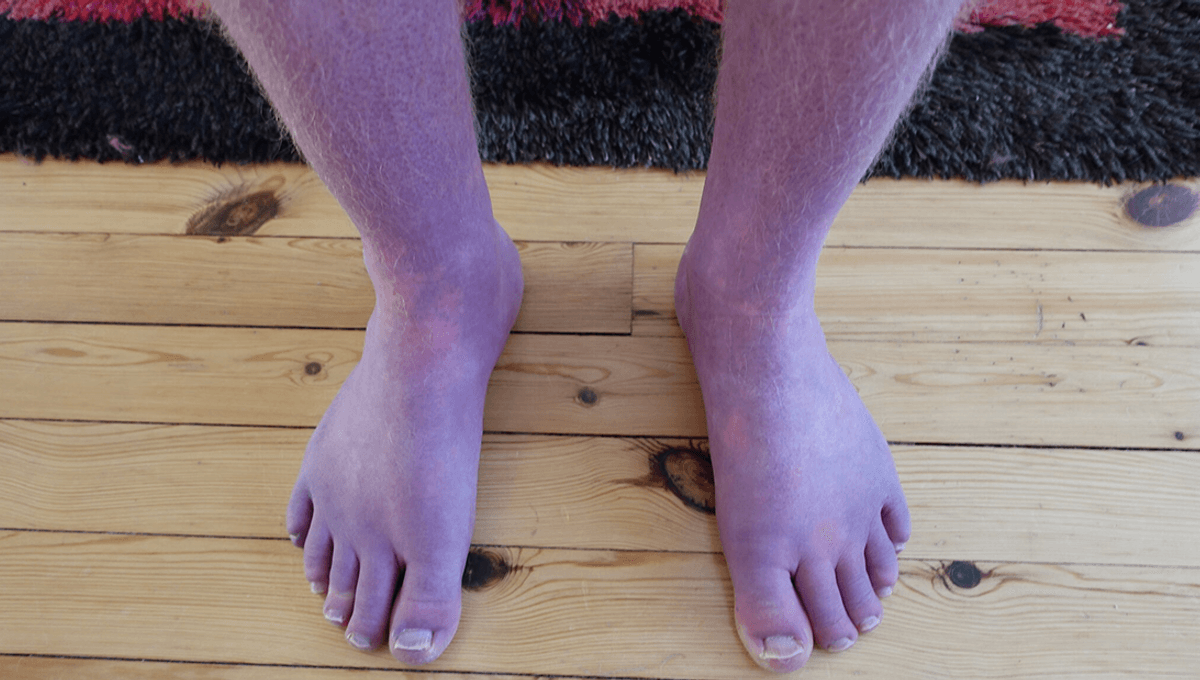Prepare to be amazed by the extraordinary case of a man whose legs turned a mysterious shade of purple, possibly due to the rare complications of long COVID.
This 33-year-old individual sought help from a specialist clinic after enduring this peculiar symptom for six long months. Whenever he stood up, his legs would become heavy, itchy, and tingly, transforming into an unusual purple hue. However, the moment he laid back down, the symptoms would magically vanish.
Curious to uncover the cause, the medical team measured the patient’s blood pressure and pulse while he was lying down and after 8 minutes of standing. Surprisingly, his pulse was within the normal range while lying down, but skyrocketed to 127 beats per minute upon standing. The man also reported experiencing other symptoms like mental fogginess and shakiness, which aligned with a condition known as postural orthostatic tachycardia syndrome (POTS).
Ordinarily, when we stand up, gravity pulls some of our blood downward. To counteract this, our bodies instinctively increase our heart rate and narrow our blood vessels, ensuring a steady flow of oxygen to our heart and brain.
The British Heart Foundation explains, “If you have PoTS, these automatic adjustments fail to occur. When you transition to an upright position, the blood supply to your heart and brain decreases, causing your heart rate to rise in an attempt to compensate and improve blood flow.”
The patient had previously contracted COVID-19 18 months prior to seeking medical attention. Additionally, he had a suspected infection six months later. Following these infections, he visited another specialist clinic due to exhaustion, muscle pain, brain fog, and other symptoms associated with long COVID. It was during this time that he received the diagnosis of POTS dysautonomia, as there is mounting evidence linking long COVID and POTS dysautonomia, which can manifest after viral infections. A previous study even discovered POTS in 20 previously healthy patients following a COVID-19 infection.
“Patients experiencing this may not realize that it could be a symptom of long COVID and dysautonomia, and they may understandably feel concerned. Similarly, healthcare professionals may not be aware of the connection between acrocyanosis and long COVID,” the team explains.
“We must raise awareness about dysautonomia in long COVID so that healthcare professionals are equipped to effectively manage their patients.”
This groundbreaking study has been published in The Lancet.








